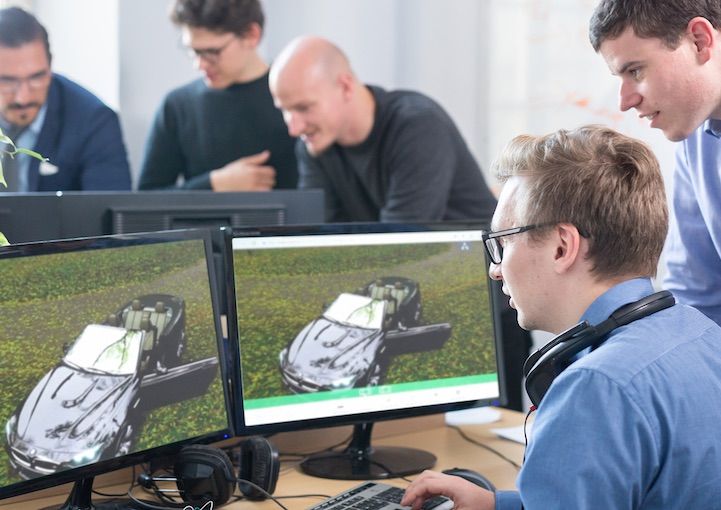3 Considerations for CTOs as They Capture Business Value in the Metaverse

As the business landscape becomes increasingly digital, the metaverse is taking shape. It’s a concept that has appeared in popular science fiction for decades, subjected to various interpretations by writers and filmmakers grappling with the potential value of rapid technological evolution.
Towards the end of the 20th century, visionary authors William Gibson ("Neuromancer") and Neal Stephenson ("Snow Crash") envisioned the metaverse as a digital world where politicians, crime lords, and business magnates battled for power and profits. More recently, Ernest Cline’s science-fiction novel "Ready Player One" (later adapted to film by Steven Speilberg) depicted the metaverse as an immersive game environment people used to escape from reality.
Interestingly, the companies leading us into the metaverse today are largely gaming companies, but they’re approaching it from a strictly business standpoint. And they’re not playing around.
Last April, Epic Games raised $1 billion to invest in its plans for the metaverse. That news came just after the ridiculously successful IPO of Roblox, which has made the metaverse concept the focal point of its long-term strategy. Clearly, investors are taking these companies seriously, as valuations for both are now soaring.
It couldn’t be a more exciting time when it comes to the business uses for the metaverse. So what, exactly, comes next?
The growing business case
What we’re seeing today is a metaverse that’s not an alternative to the real world but rather a digital reflection of it. That makes sense when you study the term’s morphemes. Whereas metadata refers to data about data, the metaverse is simply data about the universe. With technology like cloud computing, RFID chips, blockchain, and NFTs, IoT — and virtually every other technological acronym or buzzword you can imagine — companies of all kinds can create digital twins of physical objects, processes, environments, and even human bodies to achieve real-world business outcomes.
Yes, a compelling future has arrived. The companies that succeed in it are poised to become the new industry leaders, which is why the metaverse has become another buzzword in boardrooms across the world. When you are exploring the metaverse and seeking to capture the most business value out of it, keep these three considerations in mind:
1. What to digitize
Capturing business value from the metaverse means using it to deliver (and re-deliver) real-world value for customers and stakeholders. Remember that when you invest in 3D assets and models, these capabilities can be used over and over again — repurposed at a low cost and recalibrated to offer something that the physical world cannot. You can create an immersive experience for an industry trade show before updating (or reskinning) that asset for marketing purposes and sales demos. These assets can eventually live in the future metaverse.
CTOs must be strategic in the selection of what processes, objects, or environments to replicate based on the value to ultimately be delivered. You’ll have to consider budget and time constraints, of course, but also external factors that might be dictating stakeholder needs and preferences. For instance, during the height of the COVID pandemic, trade shows around the world were canceled and companies scrambled to find alternate ways to deliver similarly impactful experiences. Virtual trade shows complete with immersive 3D environments often filled the void and represented some of the first forays into the metaverse for companies like Volkswagen and others that moved quickly enough.
2. Culture and terminology
The grandiose possibilities of the metaverse are exciting, sure, but the idea of using a "game engine" to enhance business operations can be a non-starter for leaders whose business has nothing to do with gaming. Don’t let semantics get in the way of adoption — if you sense that might be the case, it could be safer to opt for "simulation engine" or something similar.
Enterprise cultures and game developer cultures are no longer worlds apart — in fact, they go hand in hand during this next evolution of the internet. CTOs can be the metaverse’s biggest cheerleader in that regard. Say you’re working on a metaverse-related project and might be dealing with game developers who want to build rich experiences (usually installed locally) that require lots of processing power. You might tell a developer you want a digital asset prototype "optimized" in the hopes of making it more viable for web-based interaction. A week later, you get an asset that looks amazing but requires four times as much processing power to render.
Learn the language and give yourself some space and grace to catch on — cultural shifts inevitably occur when the median ages of the workforce and the buying public change. New generations usher in new ways of communicating, so don’t let the words get in the way of the overall positive message.
3. Trust
It can be difficult to adopt new technology, sure, but every CTO knows it’s absolutely necessary as we wade deeper into the 21st century. Remember Blockbuster Video’s stranglehold on the movie-rental industry two decades ago? It failed to see the immeasurable potential of streaming services, allowing Netflix to supplant it as a pioneer in the space (and drive Blockbuster completely out of business in the process). It costs money to test new technology, but it could be much costlier to the business if nothing is done. You get what you pay for: Spend nothing, and that’s exactly what you’ll receive in return. Fortune favours the bold.
The key to creating an effective immersive experience is to prioritize what matters most to the customer — that’s how you’ll earn and keep their trust, which is crucial to business longevity and growth. To use the trade show example, it might be tempting to replicate an entire show floor in order to give users the feel of actually being there. The problem is that in doing this, you’ll be spending lots of cash, computing power, and labor hours building something that ultimately isn’t related to the value your business provides — which could be cars, designer fashion, or some other product. Focus your investment on the object that viewers want to see, and take advantage of new opportunities for interactivity and discovery that can only be found and delivered digitally.
As a CTO, your job is to push your company forward. You can do this even within the constraints of legacy systems thanks to technologies that are now widely available and accessible. Rather than waiting until a sluggish CIO has some sort of epiphany, create prototypes that show the cost savings, opportunities for information capture, and other advantages the metaverse can offer. If you wait too long to dive into the new digital world, you'll find that your competition is already there.
If you want to learn more about how real-time 3D technology can help your organization craft its metaverse strategy, get in touch.


